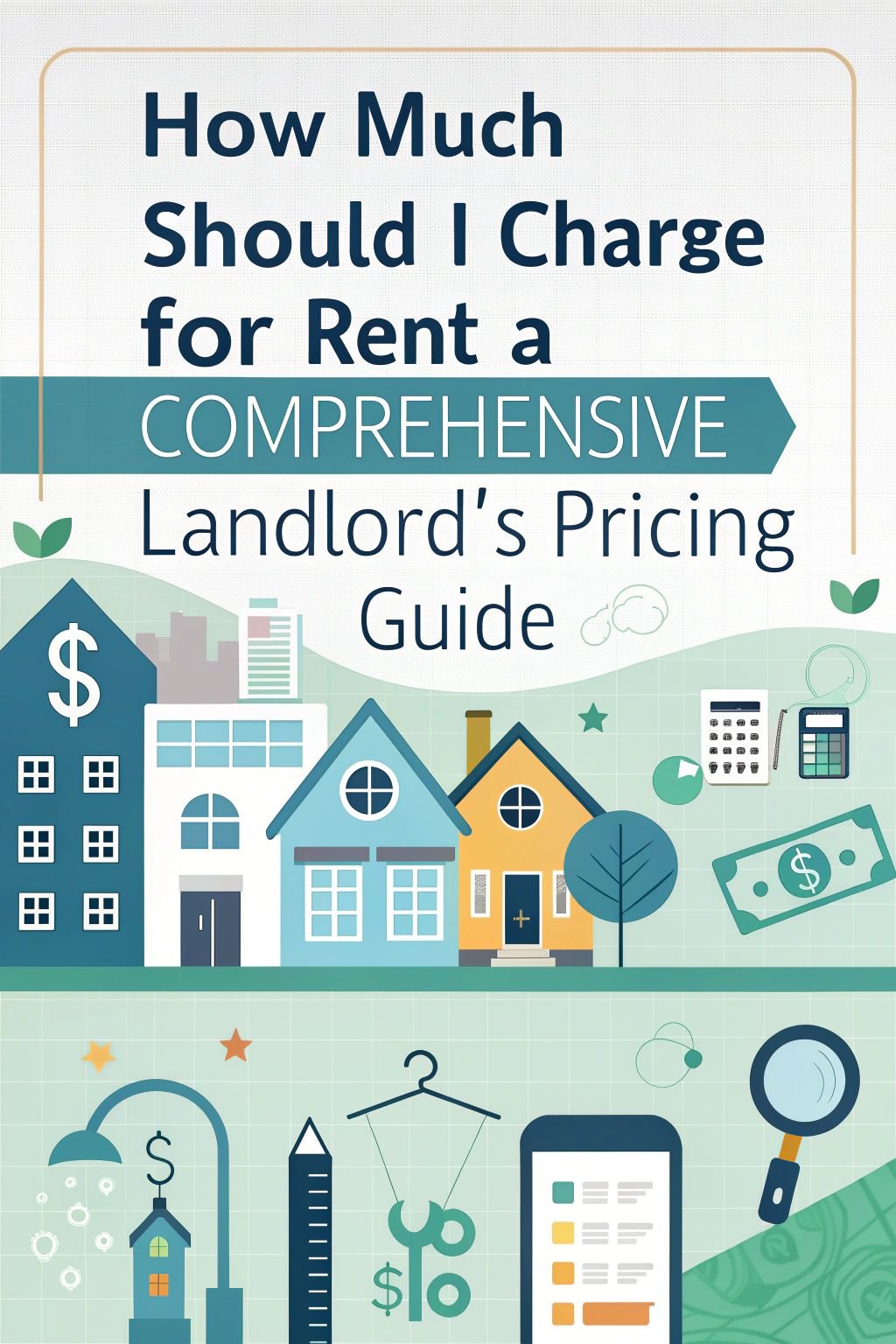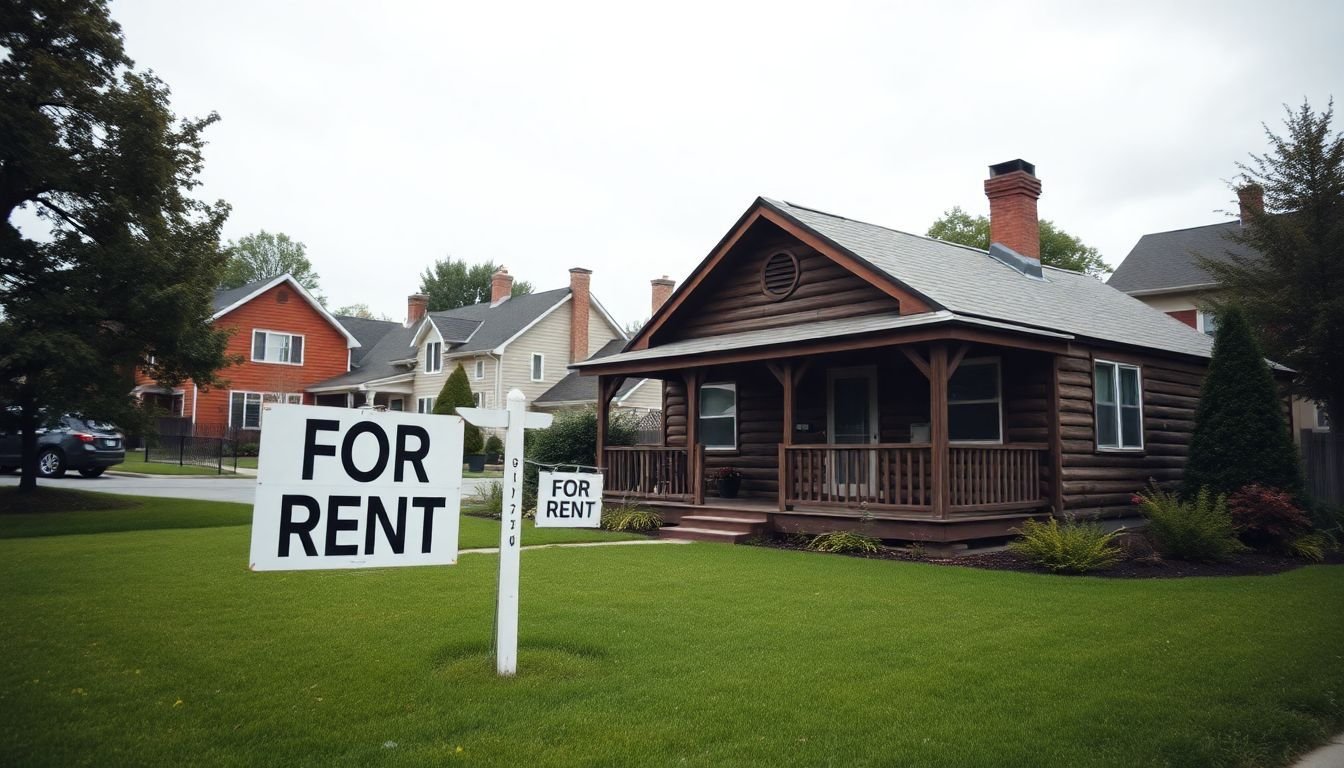Are you a landlord trying to figure out how much to charge for rent? Setting the right rental price is crucial for covering your property costs, making a profit, and attracting good tenants.
But with so many factors to consider, it can feel overwhelming to land on the perfect number.
Did you know the average asking rent in the US is around $1,900 per month? Of course, this varies a lot depending on where your property is located. This comprehensive guide will walk you through everything you need to know to confidently set your rental rate.
From using the 1% rule to analyzing market trends and factoring in property features, you’ll have all the tools to price your rental just right. Ready to become a rent-setting pro?
Key Takeaways
- Setting the right rental price is crucial for landlords to cover property costs, make a profit, and attract good tenants. The average asking rent in the US is around $1,900 per month, but this varies depending on the property’s location. Landlords can use the 1% rule (monthly rent should be 1% of the property’s value) and 2% rule (monthly rent should be 1-2% of the purchase price) as starting points for determining rent.
- Analyzing comparable properties, examining property characteristics and amenities, understanding local rent control laws, considering seasonality and market demand, and assessing financial needs and expenses are essential factors in setting rent accurately. Online tools like Zillow Rent Estimate, Rentometer, RentRange, and property management software can help determine appropriate rent prices.
- To calculate rent accurately, landlords can apply the 1% rule, use the price per square foot method (monthly rent divided by total square footage), and utilize online rent estimation tools like Zillow Rental Manager and Rentometer Pro. These tools provide insights into local market trends and help set competitive rental rates.
- Strategies for adjusting rent include keeping up with market trends by regularly analyzing comparable properties, implementing periodic rent increases of 2-5% while complying with local rent control laws and providing ample notice to tenants, and offering rent concessions such as free rent for the first month or waiving certain fees to attract tenants and boost occupancy rates.


Setting the right rental price is crucial for your success as a landlord. You can use the 1% and 2% rules or online tools to determine an appropriate rent amount.
Setting the Right Rental Price: Importance and Overview
Setting the right rental price is crucial for your success as a landlord. Price your property too high, and you risk longer vacancy periods and lost income. Charge too little, and you leave money on the table while attracting less-qualified tenants.
To maximize your rental earnings and minimize vacancies, you need to find that sweet spot that aligns with market demand and your financial goals.
In the rental market, price is king. Get it right, and you’ll reign supreme with steady income and quality tenants. – Jay Hernandez, Chief Editor and Licensed Real Estate Broker
To determine the optimal rent, start by analyzing comparable properties (rental comps) in your area. Look at factors like square footage, amenities, location, and condition. Online tools like Zillow Rent Estimate and Rentometer can provide helpful insights.
Also, consider your property’s unique features, local rent control laws, and seasonal demand fluctuations. By carefully weighing these elements, you can arrive at a competitive rental rate that attracts reliable tenants and ensures a profitable investment.
Using 1% and 2% Rules for Rental Calculations
Transitioning from the importance of setting the right rental price, let’s explore two popular methods for calculating rent: the 1% and 2% rules. These guidelines provide a starting point for determining a fair and profitable rental rate.
The 1% rule suggests that monthly rent should be approximately 1% of the property’s value. For example, if your home is worth $300,000, you would charge around $3,000 per month. However, you may need to adjust this percentage based on local market conditions, typically ranging from 0.8% to 1.1%.
The 2% rule, on the other hand, states that the monthly rent should be at least 1-2% of the property’s purchase price. This approach helps ensure that your rental income covers your mortgage payments, taxes, insurance, and other expenses.
While these rules offer a helpful framework, it’s crucial to consider additional factors, such as comparable properties, amenities, and location, to fine-tune your rental rate. Online tools like Zillow’s Rent Zestimate and Rentometer can also assist in determining a competitive price for your specific property.
Tools for Determining Appropriate Rent
Determining the appropriate rent for your property is crucial to attract tenants and maximize your rental income. Several tools can help you set the right rental price:
- Zillow Rent Zestimate: This online tool provides an estimated rent price based on your property’s location, size, and features. It analyzes comparable properties in the area to give you a ballpark figure.
- Rentometer: Enter your property’s address, number of bedrooms, and monthly rent to see how it compares to similar rentals in the neighborhood. Rentometer offers a quick and easy way to gauge the competitiveness of your rental rate.
- RentRange: This comprehensive tool provides detailed rental market analysis, including rent estimates, market trends, and demographic data. It helps you make data-driven decisions when setting your rental price.
- Local Rent Comps: Research rental listings for properties similar to yours in the same area. Look at their amenities, square footage, and monthly rent to get a sense of the going rate.
- Property Management Software: Platforms like AppFolio and Buildium offer rental market insights and pricing tools as part of their property management solutions. These can be especially helpful if you manage multiple rental properties.
- Real Estate Agents: Consult with local real estate agents who specialize in rental properties. They have expert knowledge of the rental market and can provide valuable advice on pricing your property competitively.
Using a combination of these tools will give you a well-rounded understanding of the appropriate rent to charge for your property. Remember to also consider your property’s unique features and amenities when setting the rental rate.
Next, let’s explore the essential factors that influence rental pricing.



















